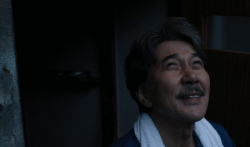So exactly, how is the world? This is the question one of the Corcoran’s newest exhibits tries to answer through a small assortment of contemporary photography. Bringing together a diverse group of photographers with styles that range from self-portraiture to exclusively using the life on the streets as a subject, How is the World? is an eclectic yet cohesive collection that offers a powerful insight into an age when both the world and the artistic medium used to capture it are constantly evolving.
Since nearly every phone has more megapixels than your old Sony Digital, it’s hard to forget just how prevalent this kind of persistent documentation is in our lives. Because it’s easy for anyone with an iPhone to take high, almost professional quality photos, a timely exhibit of contemporary photography like How is the World? cannot ignore this new level of accessibility that characterizes the craft.
Though rather compact (the whole exhibit exists in a space roughly the size of Uncommon Grounds), the Corcoran does an excellent job of artfully arranging appropriate pieces of truly timely photography, all of which carry subtle undertones of social justice.
One of the walls is dedicated to photographer Kate O’Donovan Cook, who acted as both the subject and the artist in her work; posing nude as a model for an art class, she takes an unconventional approach and makes effective use of shutter speeds to portray art in the making.
On the opposite wall, there were much larger photos, these depicting moments in time of daily events in the world. Here, British photographer Tom Hunter contributes The Vale of Rest, an image of two young persons imitating John Everett Millais’s The Vale of Rest quite cleverly.
I had two favorite pieces in the tiny exhibit. The first was Edward Burtynsky’s “Oxford Tile Pile #9ab, Westly, California, USA.” Burtynsky has long been fascinated by our global dependence on oil, and with “Oxford” captured what, at the time, was “the largest pile of waste tires in the world.” The image is about 4’ x 6’, and rightfully disturbing.
The next piece I really enjoyed was Lalla Essaydi’s “Converging Territories #30.” Essaydi used sheer passion in pictures to create a powerful critique of contemporary Arab and Islamic society. She took women, white sheets, and henna to construct an odd, creepy scene in which women posed behind the sheets and were covered head to toe in henna calligraphy. Since only males in Islamic culture use henna art, Essaydi creatively makes a critical point about the gendering spheres of her world.
Throughout the exhibit, photography proves to be an effective medium for expression of various global viewpoints, sometimes very literally and other times more creatively. Though not all of the photographs are immediately moving or shocking, they were all clearly carefully selected and cohere nicely in a small space. The central theme of social justice ensures that every portrait is not merely descriptive but normative—every picture is a representation of the world as it is, but it also contains an implication of how it should be.




